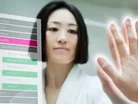Can wellness devices really improve health?

Written by Heather Fraser
The annual visit to a doctor’s office for a check-up has long been seen as the key to preventive medicine. Now, inventive entrepreneurs are starting to develop personal medical devices and gadgets that can monitor a person’s condition during the months between doctor visits. The devices can send alerts to doctors or other caregivers when things start to go wrong and allow for much timelier interventions.
These devices can improve patients’ lives, control their medical conditions and in some instances, possiblyavoid the high costs of emergency room visits. They can also add real-time data about patients’ vital signs to electronic health records.
So far, connected health devices have been aimed at two markets: fitness enthusiasts and chronically ill people who need constant monitoring. The enthusiasts pay for their own devices to track distances, pulse rates and activity levels, while insurers typically pay for monitors for chronically ill people because it is cheaper than sending nurses to their homes.
Recent research by IBM’s Institute for Business Value shows that there is a much bigger potential market between those extremes. An online survey of 1,300 people found that most were willing to pay up to US$100 plus a monthly fee for devices that could improve their health. Worldwide, billions of individuals could benefit from devices that help them reduce their weight, lower their cholesterol or monitor hypertension. Many of these people are highly motivated and want to know more about their condition and they want to take control of their health.
This particular group of peoplewill be willing to put down their own money if the devices are easy to use, and show promise of making a real difference. Connecting devices to smartphones can hold down device costs, but no matter what the device, they still need to be integrated into the healthcare system through connectivity to primary care physicians and healthcare records.
Among the most promising markets are motivational devices that could help people follow a diet, stay on an exercise program or quit smoking or drinking. Millions of people have downloaded calorie-counting apps for the iPhone and Android phones. Online support groups can also be connected to help people share information about diseases and encourage each other to eat more vegetables or stay away from drugs.
Insurers have been reluctant to pay for wellness programs without stronger research-based evidence about which ones work. And, especially in the US where individuals switch jobs and insurers frequently, the insurers fear that they will pay most of the up-front costs, but other payers will reap the benefits of future reduced expenses. However, health plans may soon begin to see this as a way to differentiate themselves to consumers and increase member loyalty. Some employers also pay for wellness programmes, including weight-loss and smoking cessation, because it makes their workers more productive.
Using technology to encourage wellness has lots of promise and it is exciting to see the ways that innovators are taking advantage of technological advances. Recently, IBM sponsored what we called a ‘SmartCamp’ for technology entrepreneurs. Healthcare emerged as an important theme, and three of the five finalists were healthcare-related companies and each had ideas that could transform patients’ lives if they work as planned.
Waldo Health makes a tablet-based home healthcare companion that can track vital signs like blood pressure, weight and glucose levels, remind patients to take their medication and allow for automatic video-conferencing with a doctor when help is needed. Meanwhile, DxUpClose makes a pocket-sized lab for health workers that can screen patients’ blood for bacterial infections and determine what antibiotic to prescribe within 60 minutes. Additionally, Tactical Information Systems is developing a product called Wander ID that uses biometrics like facial recognition to help rescuers identify lost and confused people who have wandered away from nursing homes or group care facilities.
The health care industry agrees that to improve public health and make costs manageable, individuals must take more responsibility for their own health. Many organisations are trying to devise ways to compensate doctors and hospitals for keeping patients healthy rather than for doing procedures.
Patients, insurers and government payers could all benefit from monitoring by connected medical devices and much of the data analysis could be done cheaply using sophisticated analytics in cloud computing centres. However, we need to figure out how to pay for it and when the system spots problems that require intervention, someone needs to pay doctors or other providers for the time they spend analysing data from the devices.
Technology can play a major role in the move to patient-centered health care and it is time to develop innovative solutions that can make it happen.
The Waldo Health home monitoring system:
Heather Fraser is Global Life Sciences Lead for the IBM Institute for Business Value. She is also a pharmacist with over 20 years of experience in the life sciences sector holding positions in the pharmaceutical industry, consultancy and retail pharmacy.



